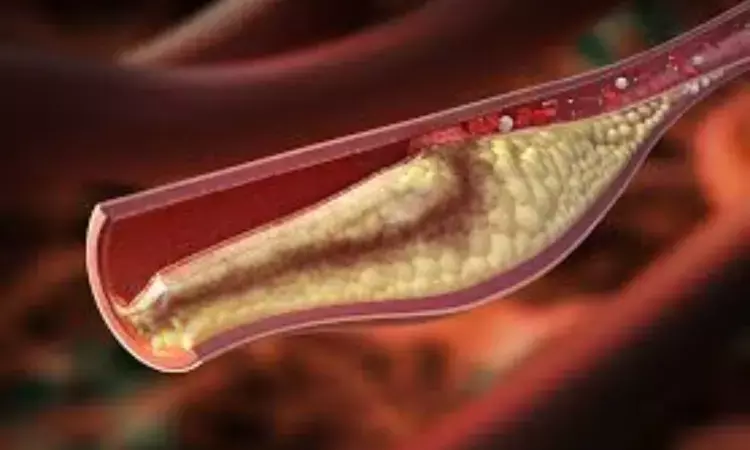- Home
- Medical news & Guidelines
- Anesthesiology
- Cardiology and CTVS
- Critical Care
- Dentistry
- Dermatology
- Diabetes and Endocrinology
- ENT
- Gastroenterology
- Medicine
- Nephrology
- Neurology
- Obstretics-Gynaecology
- Oncology
- Ophthalmology
- Orthopaedics
- Pediatrics-Neonatology
- Psychiatry
- Pulmonology
- Radiology
- Surgery
- Urology
- Laboratory Medicine
- Diet
- Nursing
- Paramedical
- Physiotherapy
- Health news
- Fact Check
- Bone Health Fact Check
- Brain Health Fact Check
- Cancer Related Fact Check
- Child Care Fact Check
- Dental and oral health fact check
- Diabetes and metabolic health fact check
- Diet and Nutrition Fact Check
- Eye and ENT Care Fact Check
- Fitness fact check
- Gut health fact check
- Heart health fact check
- Kidney health fact check
- Medical education fact check
- Men's health fact check
- Respiratory fact check
- Skin and hair care fact check
- Vaccine and Immunization fact check
- Women's health fact check
- AYUSH
- State News
- Andaman and Nicobar Islands
- Andhra Pradesh
- Arunachal Pradesh
- Assam
- Bihar
- Chandigarh
- Chattisgarh
- Dadra and Nagar Haveli
- Daman and Diu
- Delhi
- Goa
- Gujarat
- Haryana
- Himachal Pradesh
- Jammu & Kashmir
- Jharkhand
- Karnataka
- Kerala
- Ladakh
- Lakshadweep
- Madhya Pradesh
- Maharashtra
- Manipur
- Meghalaya
- Mizoram
- Nagaland
- Odisha
- Puducherry
- Punjab
- Rajasthan
- Sikkim
- Tamil Nadu
- Telangana
- Tripura
- Uttar Pradesh
- Uttrakhand
- West Bengal
- Medical Education
- Industry
Non-Invasive Liver Scores Predict Carotid Atherosclerosis in Type 1 Diabetes, reveals research

Researchers have discovered that non-invasive liver disease scores predict preclinical atherosclerosis in patients with type 1 diabetes (T1D), proposing a novel approach to identify patients at higher cardiovascular risk. The results, obtained using carotid ultrasonography, indicate that markers of hepatic fibrosis are highly correlated with carotid plaque presence, particularly in patients with both steatosis and fibrosis. The study was published in the journal Diabetes Research and Clinical Practice by Maria C. and colleagues.
There were 679 patients with type 1 diabetes, 49.8% of whom were female. Age was 47.8 ± 10.7 years, and T1D duration was 26.9 ± 10.8 years on average. Participants who were eligible had at least one of the following: age ≥40 years, diabetic kidney disease, or ≥10 years T1D duration with other cardiovascular risk factors. Fatty liver steatosis and fibrosis were assessed by Fatty Liver Index (FLI), Hepatic Steatosis Index (HSI), and Fibrosis-4 (FIB-4) score. Participants were grouped based on these scores into three categories: no steatosis, steatosis, and steatosis with fibrosis. Carotid atherosclerosis was quantified by carotid ultrasonography, which counted the number and presence of plaques.
Key Findings
The frequency of liver steatosis and steatosis + fibrosis differed according to the scoring system.
Based on HSI, 45.2% exhibited steatosis and 8.4% had both steatosis and fibrosis. Based on FLI, the values were 13.7% and 5.1%, respectively.
Carotid plaque prevalence grew along the liver disease severity continuum.
For the HSI + FIB-4, plaque prevalence was 34.6% in patients without steatosis, 38.1% with steatosis, and 64.9% with steatosis + fibrosis. With the FLI + FIB-4 combination, plaque presence increased from 38.8% to 50% to 65%, respectively, for the same groups.
Notably, after controlling for traditional cardiovascular risk factors and T1D-specific variables, only the HSI-defined steatosis + fibrosis group had a statistically significant relationship with carotid atherosclerosis.
The adjusted odds ratio (OR) for carotid plaque presence was 1.97 (95% CI: 1.02–3.82), and for two or more plaques, 1.97 (95% CI: 1.01–3.84).
Non-invasive liver fibrosis markers, especially when steatosis is accompanied by fibrosis, are significantly associated with increased carotid atherosclerosis in people with type 1 diabetes. These findings suggest that hepatic fibrosis scoring, using tools like HSI and FIB-4, can be integrated into cardiovascular risk assessment models to help identify high-risk T1D individuals earlier and potentially guide more intensive preventive strategies.
Reference:
Claro, M., Viñals, C., Giménez, M., Perea, V., Granados, M., Serés-Noriega, T., Blanco, J., Vinagre, I., Mesa, A., Milad, C., Ayala, D., Solà, C., Esmatjes, E., Conget, I., & Amor, A. J. (2025). Hepatic steatosis with significant fibrosis is associated with preclinical carotid atherosclerosis in patients with type 1 diabetes. Diabetes Research and Clinical Practice, 112334. https://doi.org/10.1016/j.diabres.2025.112334
Dr Riya Dave has completed dentistry from Gujarat University in 2022. She is a dentist and accomplished medical and scientific writer known for her commitment to bridging the gap between clinical expertise and accessible healthcare information. She has been actively involved in writing blogs related to health and wellness.
Dr Kamal Kant Kohli-MBBS, DTCD- a chest specialist with more than 30 years of practice and a flair for writing clinical articles, Dr Kamal Kant Kohli joined Medical Dialogues as a Chief Editor of Medical News. Besides writing articles, as an editor, he proofreads and verifies all the medical content published on Medical Dialogues including those coming from journals, studies,medical conferences,guidelines etc. Email: drkohli@medicaldialogues.in. Contact no. 011-43720751


